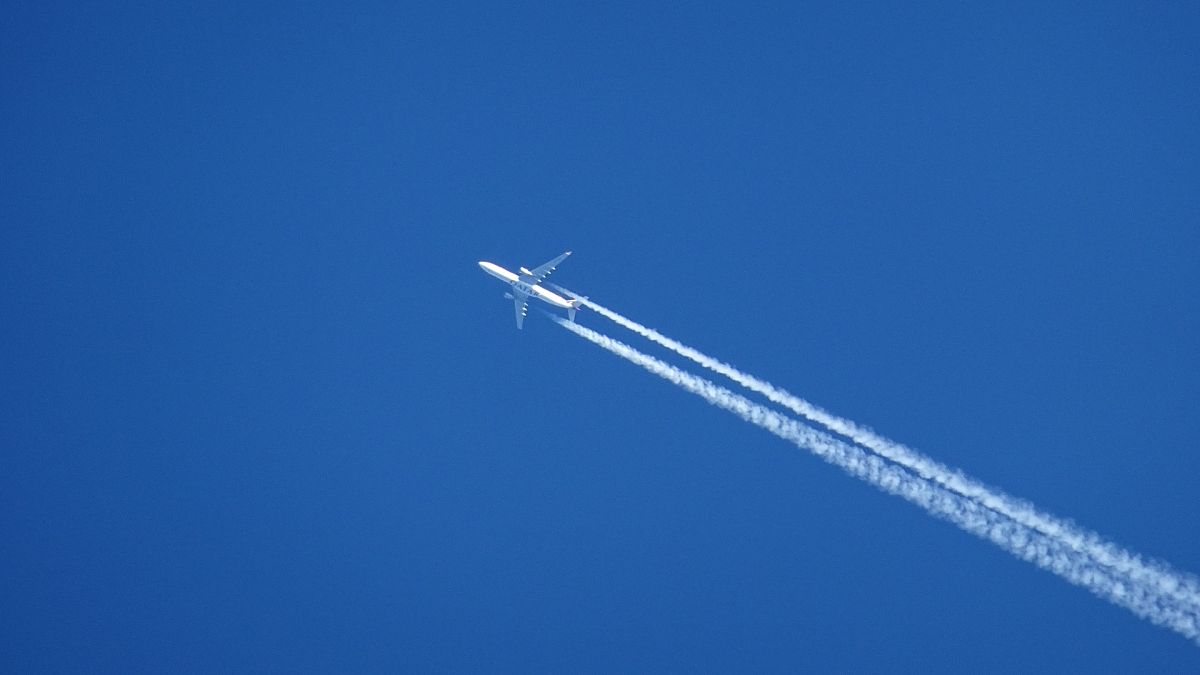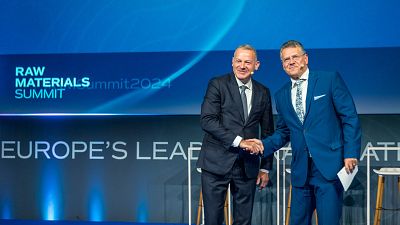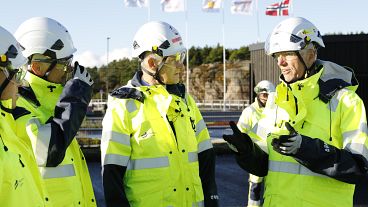Contrails or condensation trails are created when ice crystals form around tiny particles of carbon emitted by a plane’s engines.
Airlines have hit back against EU plans to monitor contrails from aircraft, claiming too little is known about their climate impact to regulate them.
The International Air Transport Association (IATA) says it’s too soon to implement regulations as there are still “gaps” in scientific knowledge about their impact.
New EU regulations will see airlines required to measure and report non-CO2 emissions from flights from January 2025. That would include contrails, nitrogen oxides and sulphur.
Contrails or condensation trails are created when ice crystals form around tiny particles of carbon emitted by a plane’s engines when they fly through layers of humidity. Depending on the atmospheric conditions, they can hang around for between a few minutes and 18 hours.
Why are contrails a problem?
Research has shown contrails may play a significant role in the climate impact of aviation. The first piece of evidence highlighting the non-CO2 impacts of flights came from the IPCC in 1999.
Since then, contrails have been shown to disrupt the balance between the sun’s incoming solar radiation and the heat being emitted from the Earth’s surface. This essentially means when these clouds persist they can trap heat in the atmosphere.
One study from 2023 found they could be responsible for 57 per cent of the aviation industry’s warming impact - more than the CO2 emissions from burning fuel. Another from 2019 predicts almost triple the “radiative forces” from contrails by 2050.
Experts from Imperial College London’s Grantham Institute have said understanding how aircraft contrails affect climate change could offer a rapid route to reducing global warming.
Solutions to the problem do exist, too. Clean fuels reduce the amount of non-CO2 pollutants released into the air. Aircraft can also avoid flying through areas with very cold and humid conditions, changing flight paths to lower altitudes or performing small diversions.
Rerouting less than 2 per cent of flights in Japan, for example, would reduce the warming effect of contrails by 60 per cent, according to one study.
But to work out what areas need to be avoided, airlines need to cooperate and ensure the data they collect on flight routes is available.
Airlines lobby against plans to monitor contrails
With regulations now being introduced in the EU, IATA has published a report calling for “urgent action” to deepen our understanding of the climate impact of contrails. It says the science is complex and there are gaps in knowledge about the conditions under which they form, when they persist, and how they impact climate.
“The industry and its stakeholders are working to address the impact of non-CO2 emissions on climate change, particularly contrails,” said IATA director general Willie Walsh.
“To ensure that this effort is effective and without adverse effects, we must better understand how and where contrails form and shrink the uncertainties related to their climate impact.”
As well as raising concerns about the burden of monitoring and data collection on contrails, Walsh added that formulating and implementing regulations based on “insufficient data and limited scientific understanding” was “foolish”. He claimed it could even lead to adverse impacts on the climate.
The most important conclusion from the report, according to the IATA director general, is working together to resolve these “gaps in the science” so we can “take effective actions”.



